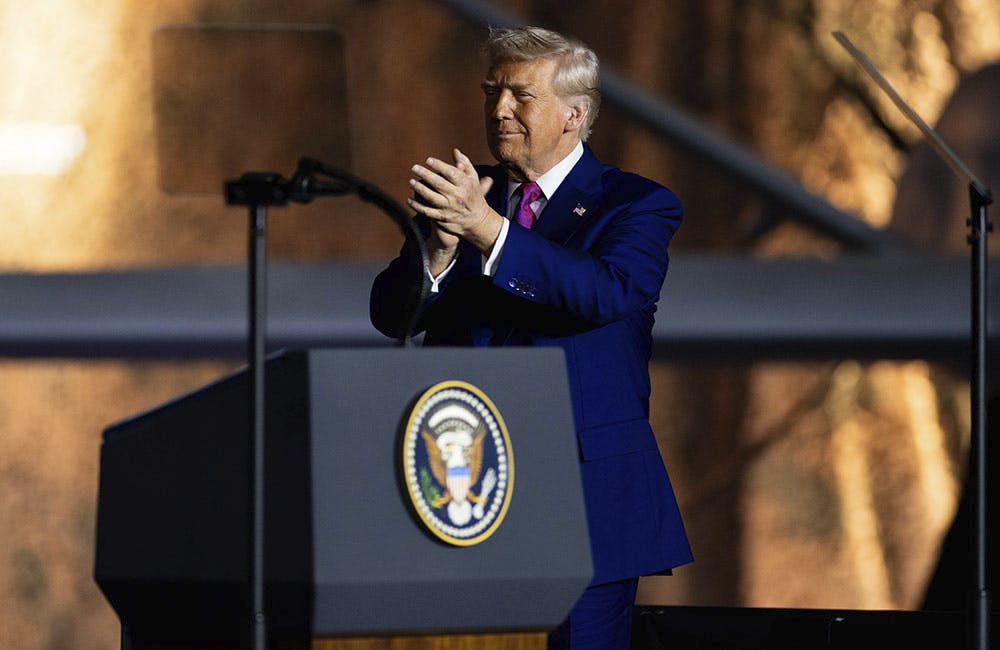Agencies Advance Quantum Use Cases to Maintain Competitive Advantage
Federal leaders are exploring potential quantum use cases to maintain national competitiveness as the technology gains traction.

The Trump administration wants to keep the United States a leader in emerging technologies while strengthening relations with allies. After President Trump’s meeting with Italy’s Prime Minister Giorgia Meloni, the White House released a statement highlighting that the strategic alliance will help each nation protect critical infrastructure with emerging technologies like quantum.
“As we transition to and innovate on the technologies of the future, such as 6G, AI, quantum computing and biotechnology, we also commit to exploring opportunities for enhanced partnerships in these critical industries that protect our data from adversaries that would exploit it,” the release said.
Members of the Trump administration, like Energy Secretary Chris Wright and State Secretary Marco Rubio, have expressed their commitment to advancing the United States’ role in quantum technologies. These technologies could help the government operate more efficiently and solve large-scale problems.
Federal leaders and international partners in quantum technologies highlighted use cases and provided insight into future quantum leadership this week at the 2025 Quantum.Tech in Washington, D.C.
U.S. Quantum Leadership Requires Strategic Partnerships
The State Department’s Quantum Policy Coordinator Thomas Plumb Reyes said the Trump administration has taken an early and high-level interest in quantum technologies. He added that partnerships with industry, other federal agencies and international allies are needed to increase American quantum leadership.
“We’ve seen … that quantum needs to be a priority in the United States,” said Plumb Reyes. “The U.S. is here and ready to partner with like-minded allies built on trust and alignment of our policies in the pro-innovation direction of this administration.”
Plumb Reyes added that increasing American quantum leadership requires more than the technology created by other agencies. It includes examining talent and markets, a secure supply chain and protecting technologies from adversarial misuse. Each element requires an international balance and offers the State Department a seat at the table.
“I think that international valence really goes back to the core of the National Quantum Strategy and the National Quantum Initiative that the Trump administration kick-started in 2018,” said Plumb Reyes. “We are really the stewards of those relationships. We are here to support and advance the important work that our colleagues across the federal government are doing, what is happening in industry across the United States and academia, too.”
Quantum’s Role in National Security
The U.S. electric grid and all devices that connect with it use semiconductor chips, but those chips can serve as bad actors. Events like fabrication errors or adversary interference can threaten the supply chain and the U.S.’s national and economic security. Quantum sensing, a type of quantum technology, can identify these errors and continuously monitor them to keep the grid secure.
Energy Department’s Senior Commercialization Executive Rima Kasia Oueid said during the event that dominating in fields like quantum sensing could secure critical infrastructure and the supply chain.
“We want to ensure that the grid is secure and the components that go into the grid, as well as all the devices that connect with the grid, so we don’t have a malicious actor,” said Kasia Oueid.
The Department of Homeland Security (DHS) is also examining the potential of quantum sensors. DHS Science and Technology Directorate’s Senior Technology Advisor for Sensors, Laura Parker, said agencies like Customs and Border Protection (CBP), the Coast Guard and the Transportation Security Administration (TSA) are looking at quantum sensing potential.
Quantum sensors could also detect underground tunnels used to transport drugs or locate military submarines underwater. Parker added that the Coast Guard uses these sensors to “see through” large chunks of ice in the Arctic regions and improve communication signals.
“In the Arctic … you can have a lot of ionospheric interference. [The Coast Guard] could be operating in environments where the comms isn’t that easy to use,” said Parker.
NASA, DOE Explore Quantum Tech in Space
The National Aeronautics and Space Administration (NASA) and the Energy Department are looking at quantum technology use cases in space and for space exploration.
As the need for technology grows, the demand for resources and materials also increases. Kasia Oueid said the Energy Department is working with sister agencies to locate and even build these resources in space. Last year, the Food and Drug Administration (FDA) approved human clinical trials of space-grown crystals, or vision proteins, that can create artificial retinas.
“We would not have been able to figure this out had it not been for the fact that they were doing this research in space, because microgravity allows for molecular growth to occur in much more accelerated fashion than ever can be experienced here on Earth,” said Kasia Oueid.
Carolyn Mercer, NASA’s chief technologist of the Science Directorate, also discussed missions using quantum technologies in space to discover other life forms. NASA launched Europa Clipper in Oct. 2024 to study one of Jupiter’s moons, Europa. Roughly the size of Earth’s moon, Europa holds the three main things needed to sustain life: liquid water, the right chemical elements and an energy source.
Through multiple fly-bys, Europa Clipper will use quantum sensors to penetrate the moon’s icy surface and examine the liquid water oceans beneath. Europa Clipper won’t land, but Mercer said this lays the foundation for future exploration of the liquid oceans.
“If we did land, we would have to figure out how to get through that ice … but also, we need to communicate whatever information we find back up through the ice and back up to an orbiter and back down to earth,” Mercer said. “We could use a superconducting quantum interference device, which is commercially available now, and maybe use that as a relay system to get that information.”
This is a carousel with manually rotating slides. Use Next and Previous buttons to navigate or jump to a slide with the slide dots
-

White House Outlines Priority Areas to Strengthen U.S. Quantum Leadership
White House OSTP Director Michael Kratsios outlines efforts to bolster U.S. quantum leadership and strengthen partnerships.
2m read -

NSF Wants Industry Driving Quantum Innovation
The agency is pushing for partnerships to enhance the research community as Congress weighs additional legislation.
3m read -

Trump Overhauls Federal Cybersecurity with New Executive Order
The new directive aims to strengthen digital defenses while rolling back "burdensome" software requirements and refocusing AI security.
3m read -

Lawmakers Considering Quantum Legislation Reauthorization
Reauthorizing the National Quantum Initiative Act could ramp up quantum development amid increased foreign pressure.
3m read








